British Empire facts!
Discover the full story behind this important piece of world history…
Spanning over 400 years, historians continue to research and discover new things about the British Empire. And today more than ever, people are recognising, questioning and understanding the full story behind this important part of world history. Let’s find out more in our British Empire facts…
British Empire facts
In the 16th Century, Britain began to build its empire – spreading the country’s rule and power beyond its borders through a process called ‘imperialism‘. This brought huge changes to societies, industries, cultures and the lives of people all around the world.
What is an empire?
Empire is a term used to describe a group of territories ruled by one single ruler or state. Empires are built by countries that wish to control lands outside of their borders. Those lands can be close by or even thousands of miles away. For example, the Roman Empire (1st – 5th Centuries A.D.) stretched all the way from Britain to Egypt.
Throughout history, empire builders have introduced new people, practices and rules to their ‘new’ lands and used its resources for their own gain, at the expense of the indigenous people – the people that inhabited the land first. This process is called ‘colonialism‘. This was no different with the British Empire…
What was the British Empire?
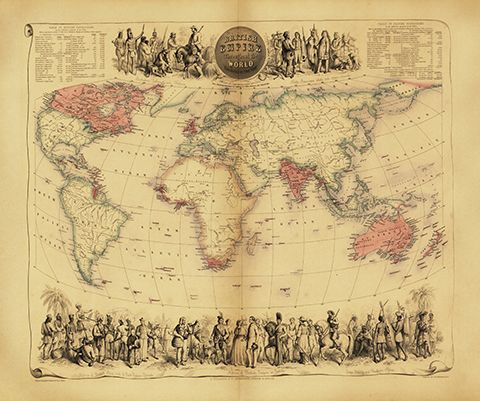
The British Empire is a term used to describe all the places around the world that were once ruled by Britain. Built over many years, it grew to include large areas of North America, Australia, New Zealand, Asia and Africa, as well as small parts of Central and South America, too.
How big was the British Empire?
The size of the British Empire – the amount of land and number of people under British rule – changed in size over the years. At its height in 1922, it was the largest empire the world had ever seen, covering around a quarter of Earth’s land surface and ruling over 458 million people.
Why did Britain* want an empire?
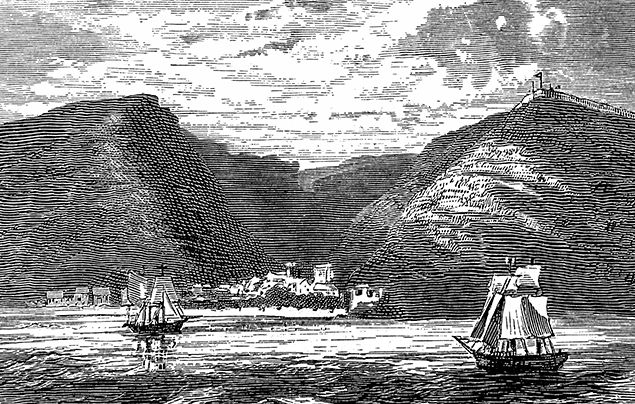
The 16th Century is often referred to as the ‘Age of Discovery‘ – new thinking about the world and better shipbuilding led to more exploration and the discovery of new lands.
England, in what is now Britain, wanted more land overseas where it could build new communities, known as colonies. These colonies would provide England with valuable materials, like metals, sugar and tobacco, which they could also sell to other countries.
The colonies also offered money-making opportunities for wealthy Englishmen and provided England’s poor and unemployed with new places to live and new jobs.
But they weren’t alone. Other European countries were also exploring the world, discovering new lands and building empires, too – the race was on, and England did not want to be left behind…
*It wasn’t until 1707 that Scotland joined with England and Wales to become The Kingdom of Great Britain.
Where were the first colonies?
The first English colonies were in North America, at the time known as the ‘New World‘. Creating colonies was no easy task for the English! In 1585, the famous explorer Sir Walter Raleigh tried and failed to build an English settlement at a place called Roanoke in Virginia. It wasn’t until 1607 that Captain John Smith founded the first permanent English colony at Jamestown in Virginia.
The ‘First British Empire’
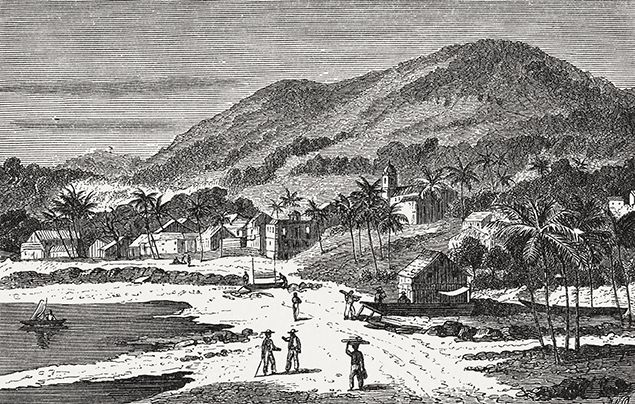
Over time, the English would claim more and more territories. This sometimes meant fighting with other European nations to take over their colonies.
Over the course of the 17th and 18th centuries, England gained major colonies in North America and further south in the West Indies, today known as the Caribbean Islands. Here, the climate was perfect for growing crops like sugar and tobacco, so they set up farms known as plantations.
Trading settlements were also created in India by a company called the East India Company. This company became so powerful, it allowed England to control of the trade of luxury goods like spices, cotton, silk and tea from India and China, and it even influenced politics.
The years 1775-1783 were a turning point in British history, as the nation lost a huge part of its empire in the American War of Independence. Feeling ‘American’ rather than ‘British’, and resentful of sending money back to Britain, 13 colonies in North America united and fought to be free from British rule. With the help of Spain, France and the Netherlands, they won the war, and gained independence, becoming the United States of America. This marked the end of what is now called the ‘First British Empire’.
The ‘Second British Empire’
Although Britain had lost a huge part of its North American territories, it claimed new lands in the late 18th Century and early 19th Century, forming the ‘Second British Empire‘. Colonies were founded in parts of Australia, and later Trinidad and Ceylon (now Sri Lanka), Singapore and Hong Kong (China) as well as other parts of Asia.
From 1881 to 1902, Britain competed with other European empire-builders in what became known as the ‘Scramble for Africa’. By the early 1900s, huge parts of Africa – including Egypt, Kenya, Nigeria and large areas of southern Africa – all came under British rule. The British Empire was larger and more powerful than ever…
As Queen of Great Britain, Queen Victoria was also Queen of all the countries in the British Empire. She was even Empress of India! Here she is pictured on a Canadian postage stamp during her reign.
The British Empire and Indigenous Peoples
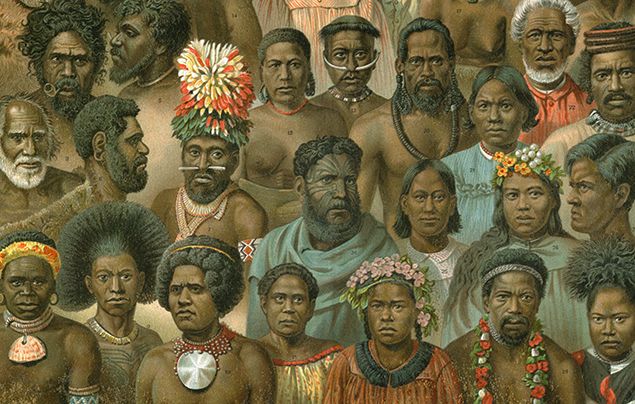
The power and wealth that Britain gained as it built its empire came at a price, and tragically, the price was paid largely by the Indigenous Peoples – tribes and communities who had lived in Britain’s so-called ‘new’ lands for centuries.
The unjust treatment of Indigenous Peoples ran the course of the British Empire. For example, in North America, local people were taken advantage of by greedy traders, robbed of their land and even faced violence and death at the hands of British settlers.
During the Second World War, India suffered some of the worst famines (lack of food) in human history, partly caused by the British government taking vital supplies away from the Indian people to support the war effort elsewhere – causing the death of millions.
Indigenous Peoples in Africa were affected in their millions. The British took valuable materials like gold, salt and ivory out of Africa and sent it back to Britain, and elsewhere. The British were also heavily involved in the Transatlantic Slave Trade in West Africa – more on that, in the next section.
Many Indigenous Peoples, including Indigenous Australians, lost not just their land, food and possessions, but their traditions, too. When British settlers arrived, they forcibly replaced the beliefs, language and traditions of Indigenous populations with their own, removing their cultural identities.
Governments and settlers drew up new borders and land boundaries that split the local people into new countries and categories that didn’t represent them or reflect their heritage, history and customs. In some countries, these changes are still a source of conflict, even now.
Today, many Indigenous communities are trying to reconnect with the heritage the British tried to erase, by celebrating their cultural identities and protecting them for the future.
Slavery and the British Empire
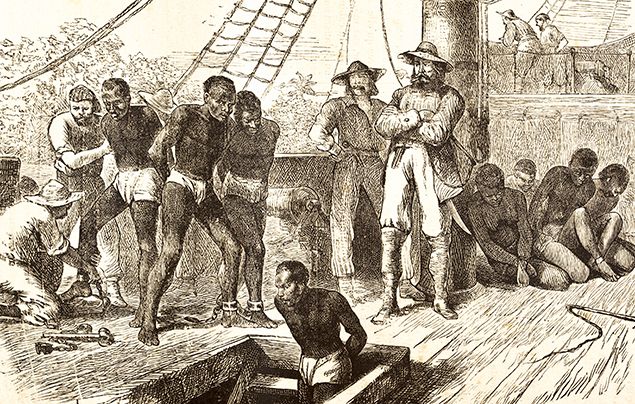
One of the most horrific parts of the history of the British Empire was its involvement in the trade of enslaved people – people who were made the property of others and forced to obey their owners’ demands.
Throughout history, slavery has existed on all continents and in many societies, but when the European imperialists arrived in Africa in the 15th Century, they began the most organised slave operation the world had ever seen – the Transatlantic Slave Trade.
Over the next 400 years, European traders bought and sold an estimated 12 million African people, who were forcibly taken from their homes and shipped across the ocean to the Americas and Europe, where their buyers forced them to work.
Of those 12 million Africans, British slave traders are estimated to have bought and sold over 3 million people – although only 2.7 million are believed to have survived the journey – during which they were cruelly packed onto ships in crowded, dirty conditions. Many enslaved people were only children, like you, and were separated from their parents and siblings.
Slavery made Britain incredibly wealthy. It provided slave owners with unpaid labour to farm expensive items like sugar, tobacco and cotton, which they could sell for huge profits – at the expense of the enslaved people and their homelands. It also largely funded Britain’s Industrial Revolution, which only went on to make Britain richer.
Britain banned the trading of enslaved people in its empire in 1807, (known as Abolition) but it was a further 26 years until it outlawed slavery altogether (known as Emancipation).* Although, even when ‘free’, former enslaved people continued to suffer in racist societies. People considered them less important than white people, and used these beliefs to help them justify the former trading of enslaved people.
Even when slavery was abolished, former slave owners were paid compensation by the British government for the loss of their human ‘property’. No compensation was paid to the enslaved people themselves! The compensation sum was vast, and in fact, the loan taken out to pay for it was still being paid off by British tax payers as recently as 2015!
Many former slave owners went on to invest their compensation money in businesses – some of which still exist today – or in development projects like the British railways. Therefore, even though slavery had ended, its legacy continued to live on.
In fact, you can still see evidence of the profits of slavery in Britain today. Just take a look at the impressive 18th and 19th Century buildings that line cities like London, Liverpool and Bristol and the grand, stately homes in the British countryside.
*Slavery continued in territories run by the East India Company until 1843.
Why did the British Empire collapse?
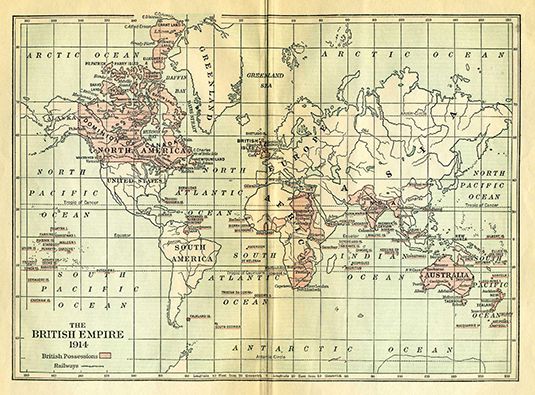
Over the course of the 20th century, Britain’s empire broke down in stages. After the First World War (1914-1918) there was a feeling of ‘nationalism’ sweeping the globe, whereby countries should have the right to be independent and rule themselves. In 1926, Canada, Australia, New Zealand and South Africa became independent, meaning they were no longer under British control.
So, why were these countries given independence first? Well, by this time these countries had large white populations of European descent, living under the rule of formal governments. They were therefore considered to be more experienced and ‘able’ to run their own country successfully, which would benefit the empire as a whole. Racist views held by the British at the time meant that other British colonies – with large populations of non-white people – weren’t granted independence, even when they asked for it…
Over the next decades, however, the remaining colonies continued to push for independence. After the Second World War, Britain no longer had the wealth or strength to manage an empire overseas. Many colonies had fought for the British during the war (although people of colour were mainly given low-rank positions), and were making their own plans for independence.
In 1947, India won its independence, and from the 1950s to 1980s, African colonies also fought for and won their independence. The last significant British colony, Hong Kong, was returned to China in 1997. What had taken hundreds of years to build, was broken down far quicker!
That said, there are some small fragments of the British Empire that still exist today, known as ‘British Overseas Territories’. These are mainly self-governing countries separate to the United Kingdom, that continue to share a bond with Britain. They include Anguilla, Bermuda, British Antarctic Territory, British Indian Ocean Territory, British Virgin Islands, Cayman Islands, Falkland Islands, Gibraltar, Monserrat, Pitcairn Islands, St. Helena, Ascension and Tristan da Cunha, South Georgia and the South Sandwich Islands and Turks and Caicos Islands.
The fight for independence
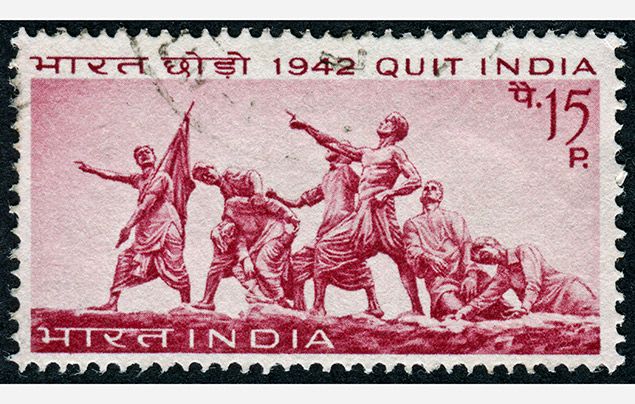
An Indian postage stamp remembers the 1942 ‘Quit India’ movement, which fought for freedom from British rule.
In their efforts to free themselves from British rule, many people were treated cruelly – and, in some cases, demands and protests were met with violence from British forces.
In 1919, for example, in an event known as the Amritsar Massacre, the British imprisoned and killed thousands of Indian people taking part in a peaceful independence protest.
Years later, in 1950s Kenya, one of the most horrific events in British history took place during the ‘Mau Mau Uprising‘. In response to protests and violent riots, the British executed Kenyans and imprisoned many in camps, where they were forced to live in inhumane conditions – and even tortured. Estimates on the number of Kenyans affected varies hugely, but many believe that thousands were executed, tens of thousands imprisoned and over a million were forced from their homes and made to live elsewhere.
The truth about what happened in Kenya was hidden for many years, and only truly came to light in 2013, after a group of Kenyan victims won a court battle that forced the British government to apologise and pay them compensation for their sufferings.
What is the Commonwealth?

As the British Empire began to fall, it was replaced by what is today called The Commonwealth (or The Commonwealth of Nations) – an organisation that countries can choose to join, or leave. It began in 1931, when the United Kingdom, Australia, New Zealand and South Africa formed the British Commonwealth of Nations. Today, it is made up of over 50 countries who work and trade together. They also share a common set of values, including fair political elections, the respect of human rights and working towards international peace.
What do we think about the British Empire today?
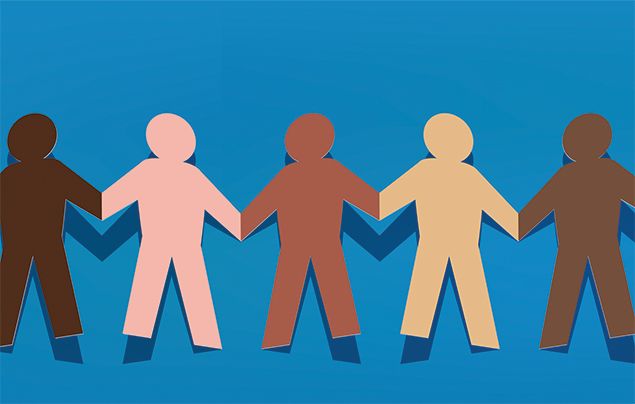
By the time the British Empire came to an end, it had truly left its mark on the world. Countries had experienced huge social, economic and political changes under British rule. But what the British Empire left behind is a complex topic that is questioned and discussed to this very day…
In the past, the British largely looked proudly on its empire, as a period that brought power and wealth to Britain, funding exciting new inventions, technology, the trade of exotic goods and helping other countries to ‘modernise’.
When the empire was being built, British people largely believed they were doing the right thing. In their eyes, they were improving and developing lands and bringing order to non-white countries which – due to racist attitudes – they thought were ‘uncivilised’ and ‘backward’. The British also believed they were doing the work of God by spreading Christianity – which they considered to be the ‘right’ religion.
Today, those British attitudes are changing. People are learning more about the wrongs that the Empire forced on Indigenous Peoples and the long-lasting damage that it left on its overseas territories, long after the empire was over.
While empire made Britain richer, its lands overseas became poorer, as much of the wealth was taken and sent back to Britain, or enjoyed by British landowners. This created vast differences in wealth – not only between countries, but between people of different races, too.
In societies across the British Empire, people of European descent (with white skin) were seen as ‘superior’ and had more wealth, rights and privileges than Indigenous people, especially enslaved people, and later, their descendants – who had darker or black skin.
In the USA, even after the abolition of slavery in 1865, African Americans faced huge prejudice and discrimination, being treated as ‘inferior’ to white citizens. Much was the same in South Africa, too, where a racist system, called ‘apartheid’, was introduced to keep black and white people separate.
In fact, following European imperialism, people of colour have had to work incredibly hard for equal rights and opportunities. Sadly, this struggle is still ongoing in countries around the world, including the United Kingdom. Even though laws state everyone should be treated equally regardless of race, people continue to face hardships and disadvantages because of the colour of their skin.
The good news is that more and more people are speaking out against racism and their voices are being heard. And thankfully today, more than ever, organisations, charities, governments and individuals around the world are working together to create a future where everyone is treated fairly and equally.
And you can help, too!
– Treat everybody equally, no matter the colour of their skin.
– If you see or hear someone being treated unfairly, because of where they come from or what they look like, tell a trusted grown-up, like a parent or teacher.
– Learn about different people and cultures around the world, and encourage others to do the same! You can find lots of fab features on different countries and cultures, here.
– Discover the stories of famous figures who have fought for equality, such as Rosa Parks, Nelson Mandela and Martin Luther King.
What did you think of our British Empire facts? Leave us a comment and let us know!
Images ⓒ Getty Images: ‘British Empire Throughout the World’ map (172849572), illustration of Jamestown, St Helena (1130096285), wood engraving of Tobago (1211948053), Canada postage stamp (93298541), Polynesian and Australian Indigenous people (1201874497), enslaved people boarding a vessel (157479463), British Empire 1914 map (96229510), Quit India postage stamp (175417247), Commonwealth of Nations flags (135350558), paper people (1187828086).
Words by: Paul Kane and Molly Groarke
Special thanks to the Museum of British Colonialism and the British Empire & Commonwealth Collection.
More Like General History

The Life of Mary Seacole
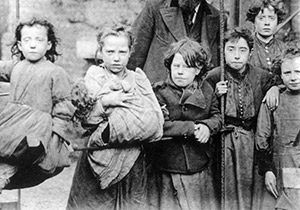
15 facts about the Victorians!
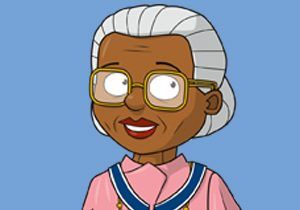
The life of Rosa Parks
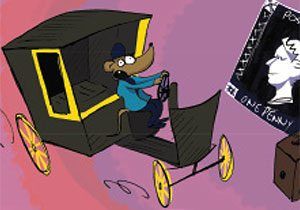




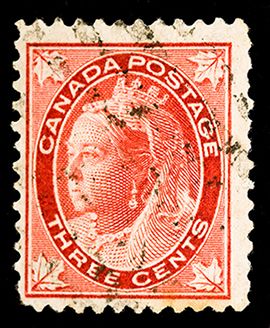




LEAVE A COMMENT
THANK YOU
Your comment will be checked and approved shortly.
WELL DONE,
YOUR COMMENT
HAS BEEN ADDED!
COMMENTS
I love this web it is helping me with homework
It is very interesting
It is very good
so totally epic
CUSTOMIZE YOUR AVATAR